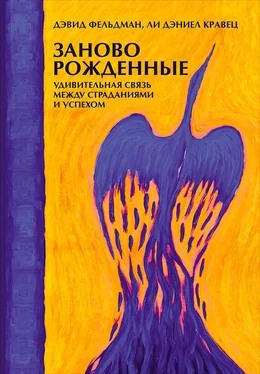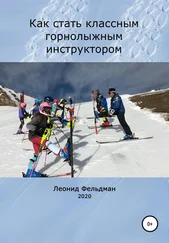Oceanrowing.com. “Completed Ocean Rows in Chronological Order of Departures,” 2010. http://www.oceanrowing.com/statistics/stats_rows_chronological_order.htm.
Peale, N. M. The Power of Positive Thinking. New York: Prentice-Hall, 1952.
Schweingruber, D. “Success through a Positive Mental Attitude? The Role of Positive Thinking in Door-to-Door Sales.” The Sociological Quarterly 47 (2006): 41–68.
Snyder, C. R., D. B. Feldman, J. D. Taylor, J. D., L. L. Schroeder, and V. Adams III. “The Roles of Hopeful Thinking in Preventing Problems and Promoting Strengths.” Applied and Preventive Psychology: Current Scientific Perspectives 15 (2000): 262–95.
Snyder, C. R., C. Harris, J. R. Anderson, S. A. Holleran, L. M. Irving, S. T. Sigmon, et al. “The Will and the Ways: Development and Validation of an Individual-Differences Measure of Hope.” Journal of Personality and Social Psychology 60 (1991): 570–85.
Spiegel, D. Living beyond Limits: New Hope and Healing for Facing Life-Threatening Illness. New York: Random House, 1995. van der Weijden, M. Better. Netherlands: Ambo, 2010. van der Weijden, M. “On Surviving Cancer and Becoming Olympic Champion.” Presentation delivered at TEDx, Rotterdam, September 9, 2010. http://tedxtalks.ted.com/video/TEDxRotterdam-Maarten-van-der-W.
Weinstein, N. D., A. Kwitel, K. D. McCaul, R. E. Magnan, M. Gerrard, and F. X. Gibbons. “Risk Perceptions: Assessment and Relationship to Influenza Vaccination.” Health Psychology 26 (2007): 146–51.
Weiss, R. The American Myth of Success: From Horatio Alger to Norman Vincent Peale. Champaign: University of Illinois Press, 1988.
Wrosch, C., M. F. Scheier, C. S. Carver, and R. Schulz. “The Importance of Goal Disengagement in Adaptive Self-Regulation: When Giving Up Is Beneficial.” Self and Identity 2 (2003): 1–20.
3
Brown, S. L., and R. V. Gould. “A Prospective Study of Relationships between Propositions about Risk and Driver Speeding.” Accident Analysis and Prevention 46 (2012): 1–7.
Goldsmith M. “Helping Successful People Get Even Better.” Business Strategy Review 14 (2003): 9–16.
Goldsmith, M., and M. Reiter. What Got You Here Won’t Get You There. New York: Hyperion, 2007.
Hallett, C., A. Lambert, and M. A. Regan. “Text Messaging amongst New Zealand Drivers: Prevalence and Risk Perception.” Transportation Research, Part F, 15 (2012): 261–71.
James, N. J., P. A. Gillies, and C. J. Bignell. “AIDS-Related Risk Perception and Sexual Behaviour among Sexually Transmitted Disease Clinic Attenders.” International Journal of STD and AIDS 2 (1991): 264–71.
Janz, N. K., and M. H. Becker. “The Health Belief Model: A Decade Later.” Health Education Quarterly 11 (1984): 1–47.
Lowther, J., and H. Lane. “Self-Efficacy and Psychological Skills during the Amputee Soccer World Cup.” Athletic Insight: The Online Journal of Sports Psychology 4 (2002). http://www.athleticinsight.com/Vol4Iss2/SoccerSelfEfficacy.htm.
Nelson, E., P. Atchley, P., and T. D. Little. “The Effects of Perception of Risk and Importance of Answering and Initiating a Cellular Phone Call While Driving.” Accident Analysis and Prevention 41 (2009): 438–44.
Olson, R. L., R. J. Hanowski, J. S. Hickman, and J. Bocanegra. Driver Distraction in Commercial Vehicle Operators. Washington, DC: U. S. Department of Transportation, 2009.
Taylor, S. E. Positive Illusions: Creative Self-Deception and the Healthy Mind. New York: Basic Books, 1991.
Taylor, S. E., and D. A. Armor. “Positive Illusions and Coping with Adversity.” Journal of Personality 64 (1996): 873–98.
Weinberger, M., J. Y. Greene, J. J. Mamlin, and M. J. Jerin. “Health Beliefs and Smoking Behavior. American Journal of Public Health 71 (1981): 1253–55.
Weinstein, N. D. “Unrealistic Optimism about Future Life Events.” Journal of Personality and Social Psychology 39 (1980): 806–20.
4
Draper, R. S. Goldstein, W. S. Hylton, M. Kirby, R. Naddaf, T. Newmyer, and G. Veis. “The 50 Most Powerful People in D. C.” GQ, November 2009. http://www.gq.com/news-politics/politics/200911/50-most-powerful-people-in-dc#slide=1.
Janoff-Bulman, R. “Assumptive Worlds and the Stress of Traumatic Events: Applications of the Schema Construct.” Social Cognition 7 (1989): 113–36.
Janoff-Bulman, R. Shattered Assumptions: Towards a New Psychology of Trauma. New York: Free Press, 2002.
Joseph, S. What Doesn’t Kill Us: The New Psychology of Posttraumatic Growth. New York: Basic Books, 2011.
Joseph, S., and P. A. Linley. “Positive Adjustment to Threatening Events: An Organismic Valuing Theory of Growth through Adversity.” Review of General Psychology 9 (2005): 262–80.
Lerner, M. J. The Belief in a Just World: A Fundamental Delusion. New York: Springer, 1980.
Lerner, M. J. “The Justice Motive: Where Social Psychologists Found It, How They Lost It, and Why They Might Not Find It Again.” Personality and Social Psychology Review 7 (2003): 388–99.
Lerner, M. J. “Observer’s Evaluation of a Victim: Justice, Guilt, and Veridical Perception.” Journal of Personality and Social Psychology 20 (1971): 17–35.
Littleton, H. L., and A. Grills-Taquechel. “Evaluation of an Information-Processing Model Following Sexual Assault.” Psychological Trauma: Theory, Research, Practice, and Policy 3 (2011): 421–29.
Matthews, C. (host). Hardball with Chris Matthews, MSNBC, August 23, 2005.
Morgan, G. S., D. C. Wisneski, and L. J. Skitka. “The Expulsion from Disneyland: The Social Psychological Impact of 9/11.” American Psychologist 66 (2011): 447–54.
Payne, A. J., S. Joseph, and J. Tudway. “Assimilation and Accommodation Processes Following Traumatic Experiences.” Journal of Loss and Trauma 12 (2007): 73–89.
Resick, P. A., and M. K. Schnicke. “Cognitive Processing Therapy for Sexual Assault Victims.” Journal of Consulting and Clinical Psychology 60 (1992): 748–56.
Rieckhoff, P. Chasing Ghosts: Failures and Facades in Iraq: A Soldier’s Perspective. New York: NAL, 2007.
Rieckhoff, P. “The Iraq Debate — New Ideas Series, Volume 1: “The Gelb/Biden Plan.” Huffington Post, June 15, 2006. http://www.huffingtonpost.com/paul-rieckhoff/the-iraq-debatenew-ideas-_b_23061.html.
Sheehan, C. “A Bright Spot in Bush World amid the Miserable Failures on the Same Planet.” Huffington Post, September 16, 2005. http://www.huffingtonpost.com/cindy-sheehan/a-bright-spot-in-bush-wor_b_7433.html.
Sheehan, C. Myth America: 10 Greatest Myths of the Robber Class and the Case for Revolution. San Francisco, CA: Cindy Sheehan’s Soapbox, LLC, 2009.
Sheehan, C. Not One More Mother’s Child. Maui, HI: Koa Books, 2005.
5
Brewin, C. R., B. Andrews, and J. D. Valentine. “Meta-Analysis of Risk Factors for Posttraumatic Stress Disorder in Trauma-Exposed Adults.” Journal of Consulting and Clinical Psychology 68 (2000): 748–66.
Corbett, P. “Scottsdale Chefs Endure Hard Times during Recession.” Arizona Republic, January 29, 2000. http://www.azcentral.com/community/scottsdale/articles/20110129scottsdale-chefs-close-restaurants.html.
Gabert-Quillen, C. A., L. A. Irish, E. Sledjeski, E. Fallon, E. Spoonster, and D. L. Delahanty. “The Impact of Social Support on the Relationship between Trauma History and Posttraumatic Stress Disorder in Motor Vehicle Accident Victims.” International Journal of Stress Management 19 (2012): 69–79.
Goodwin, S. (executive producer). “Aid Worker Leaves Haiti with a Sour Taste” [radio broadcast]. Talk of the Nation. NPR. May 10, 2012.
Henderson, N. “Economy Gained Strength in 2006: Growth Dispels Recession Fears.” Washington Post, February 1, 2007. http://www.washingtonpost.com/wp-dyn/content/article/2007/01/31/ARcol1/0/.html.
Читать дальше
Конец ознакомительного отрывка
Купить книгу










